#historical viking martial arts
Explore tagged Tumblr posts
Text
Ah damn finally I finished my folk clothes concept of my fiction project work. I WOULD EXPLAIN THE WHOLE STUFF YIPPPEEEEE

Llora: The Home Galaxy of Gary
Llora is Gary's home galaxy, and it can be thought of as a space or alien version of Germany, though with some differences. The inhabitants of Llora are divided into two main races: Herzt and Norsk.
Norsk: This race is inspired by ancient Viking and Norse Scandinavian cultures. Most of them have blonde hair, and some (though a minority) follow Norse mythology, believing in gods like Odin, Thor, Loki, and Heimdall. They also believe that the capital planet of Llora, Minisk is akin to Asgard, the home of the Aesir gods. Norsk originally come from planets Minisk, Jerze, and Fjoshr. In ancient times, they were skilled miners, hunters, builders, and blacksmiths, capable of crafting vehicles and melee weapons.
Herzt: This race, with dark hair, has a distinct Celtic-Teutonic vibe. As you might guess from Gary's full name, Gary Erwin O'Fionnaghal, he belongs to the Herzt clan. They adopted a form of Catholicism brought by the Jesto people through trade. In ancient times, the Herzt were mostly farmers, experts in agriculture, medicine, and metal sculpting. They excelled in sculpting metal for tools, weapons, and infrastructure, including buildings and houses. They were also the first to create firearms and iconic musical instruments, like one resembling a Kithara. Interestingly, they are also credited with inventing beer. The Herzt originally came from the planets Vinz, Drien, and Nitz.
Both races share a writing system similar to ancient Norse runes. Over time, they developed a common language, now known as the Llora dialect of German, and these runes became their official alphabet. Culturally, both the Herzt and Norsk are known for being quite barbaric. A notable aspect of their culture is the normalization of same-sex relationships, which have been accepted since ancient times, long before Earth was struck by Theia.
---
Ida: The Home Galaxy of Johann
Ida is Johann’s home galaxy, and its people, the Elmaz, are like a space or alien version of the British. However, their culture is about 4.5/100 similar to ancient Rome and Sparta.
The Elmaz are known for their fighting skills and iconic martial arts. In battle, they are ruthless and fierce, similar to the Spartans. They train in special battle arenas with various challenges, such as spear duels, sword duels, climbing, and chariot combat. Even in modern times, these training grounds are used to test individuals aspiring to enter the military or intelligence academies. Johann himself trained in such an academy, which is why he's so skilled.
The Elmaz were pioneers in technology, developing it from the rich natural resources in their territory. They are hardworking and renowned explorers. Despite their fierce nature, the Elmaz are deeply loyal to their comrades and care deeply for one another, like brothers. If one of their own goes missing or dies, they feel a profound sense of loss. They also have their own mythology, with gods like Agnethe, the Goddess of War, and Tigenar, the God of Wisdom. However, with the arrival of the Jesto people, followers of the Elmaz mythology have dwindled. Their old language was Latin, which evolved into the British English they speak now.
---
Olimpa: The Alien Version of Greece
The race from Olimpa is called the Toze, and as you might expect from the name, they are devout worshippers of gods like Zeus, Hera, Artemis, Apollo, Athena, Ares, Hades, and Poseidon. Mount Olympus is located on their capital planet, and they have a temple there as well. Historically, this race was fanatically devoted to their mythology.
In ancient times, the Toze were a poor civilization. When the Ida (Elmaz) tried to help them, the Toze rejected their assistance, leading to a war between the two. The Toze were defeated and eventually apologized to the Ida. For a time, Olimpa became part of the Ida Empire. Even after Ida left the empire, Olimpa remained an ally, benefiting from their advancements in technology and civilization. Without the Ida, Olimpa would likely have remained underdeveloped. Sadly, in my current lore, Olimpa has been completely wiped out after being conquered by Llora, and no Toze remain.
---
Civilization Timeline
In my lore, the Ida civilization (Elmaz) is the oldest, followed by Llora (Herzt and Norsk), and finally Olimpa (Toze). The Ida are the most advanced technologically.
Unique Traits of Each Race
- Herzt: If one of their body parts is cut off, it will grow back.
- Norsk: They have three lives.
- Ida/Elmaz: They can live up to 200 years.
There are more other races in my lore , and I'm sure I will plan to develop them later!
Close-ups!



2 notes
·
View notes
Text
I bet precolonial indigenous cultures in the PNW and elsewhere had some crazy cool martial arts going on like the fact this guy exists is proof enough for me that there was a complex martial system in existence.

Like you don’t end up with dedicated fighting tools unless you already have a fighting system to begin with. I am definitely categorically not the person to go and reconstruct this kind of thing, but I would love to see some people who are part of the cultures try to revive the systems. If Dimicator can do it with Viking age martial arts and Da’Mon Stith can do it with African martial arts then I’m beyond sure it’s possible for other cultures to reconstruct their own historical martial arts
0 notes
Text

Battling Blades's 4 Tips for Choosing the Right Sword
Selecting the right sword can be a deeply personal and rewarding experience, whether you're a collector, a martial artist, or a historical enthusiast. At Battling Blades, we craft each sword with meticulous attention to detail, ensuring that every piece is both functional and beautiful. To help you make the best choice, here are four essential tips for choosing the right sword.
1. Understand Your Purpose
Before selecting a sword, it's crucial to determine its intended use. Are you looking for a decorative piece to display, a functional sword for training or reenactment, or perhaps a historically accurate weapon for collection? Your purpose will guide your choice. For example, a katana is ideal for Japanese martial arts practice, while a Viking sword might be perfect for reenactments. Knowing your purpose will help you narrow down the type and style of sword that best suits your needs.
2. Consider the Blade Material
The material of the blade is a key factor in determining the sword’s quality and functionality. High-carbon steel is preferred for functional swords because of its excellent edge retention and durability. Stainless steel, on the other hand, is more suited for decorative swords due to its resistance to rust and corrosion. At Battling Blades, we use only premium materials, ensuring that each sword not only looks impressive but also performs exceptionally well when needed.
3. Pay Attention to Balance and Weight
A sword's balance and weight are critical to its usability. A well-balanced sword feels comfortable in the hand, allowing for smooth and precise movements. The weight should be appropriate for your strength and skill level—too heavy, and it becomes unwieldy; too light, and it may lack the necessary force. Test the balance by holding the sword and noting how it feels in motion. A balanced sword will reduce fatigue and increase control.
4. Appreciate the Craftsmanship
Finally, appreciate the craftsmanship that goes into making a sword. The details in the blade, hilt, and scabbard should reflect the quality and care invested in its creation. At Battling Blades, our swords are handmade with precision, using traditional techniques that honor the history and art of sword-making. Whether you're drawn to a specific historical era or a particular style, the craftsmanship should resonate with you.
Conclusion
In conclusion, choosing the right sword involves understanding your purpose, considering the blade material, ensuring proper balance and weight, and appreciating the craftsmanship. By following these tips, you'll find a sword that not only meets your needs but also becomes a treasured piece in your collection.
1 note
·
View note
Text
I love martial arts but, being disabled, it may not be the best exercise for me anymore. I like it mainly for the mental aspect, it calms me. Hopefully I can find another physical exercise that has the same effect.
Its very frustrating when I may no longer be able to to something like this, that I love. But I'm sure I can find some other outlet and form of outward meditation.
I want to try climbing and archery. I also want to look for online resources for historical battle reenactment- like HEMA but I want it to be no older than the Viking age.
0 notes
Text

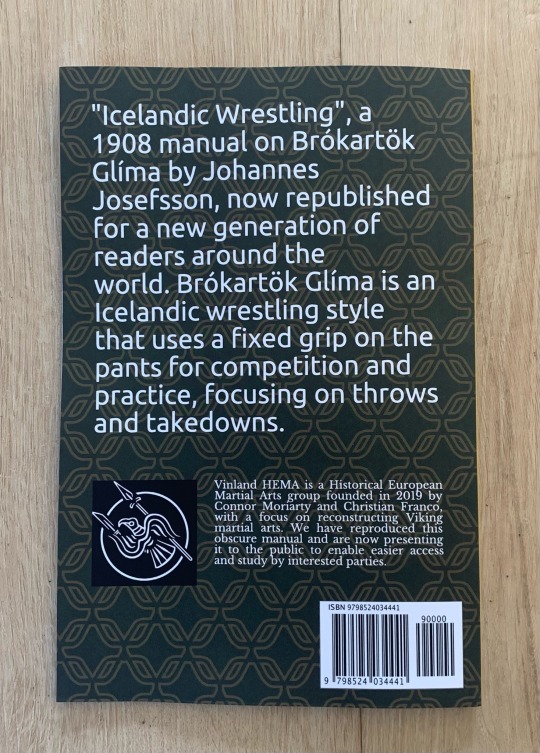
Here’s something I’m really excited about: I edited and republished a historical work! Search “Icelandic Wrestling: A Study on Brókartök Glíma: A Viking Martial Art” to find it on Amazon! You can also check out vinlandhema on Instagram if you’re interested in this sort of thing, all the techniques in this manual are detailed on that page (check out the Brókartök highlight).
Brókartök Glíma is a martial art and folkstyle of wrestling, part of the broader umbrella of Glíma brought to Iceland by its Viking settlers. Glima is an authentic viking martial art, still practiced today. Brókartök is the most well known aspect of Glíma, the pants grip variation of Glíma, where both players take and use a fixed grip on the pants throughout the match. There’s a few theories on why, and my afterword for this text explains every theory I’ve come across. Brókartök literally translates to pants-grip from Icelandic.
If you’re interested in Brókartök Glíma, learning more about this exciting and dynamic historical martial art, or just willing to support my work on HEMA (especially Viking HEMA), picking up this book would be a great way to do it. Even just liking and sharing to boost would help a lot !!!
#norse paganism#asatru#the asatru community#norse gods#heathen#norse pagan#pagan#pagan things#historical viking martial arts#viking martial art#historical european martial arts#martial arts#martialarts#vinlandknifefightingguild#vinlandHEMA#glima#glíma#Brókartök#brokartok#Brókartök Glíma#hema#vikings#Viking#norse#asatrú#wrestling#folkstyle#folk wrestling#book reccomendations#book
175 notes
·
View notes
Text
How dare you leave The New Adventures of Robin Hood (1997-1999) out of this
It had everything — constant martial art moves, unabashed refusal to even attempt historically correct language, spider monsters hanging from noticeable wires, elves, amazons, vikings, witches, zombies, aliens, at one point Marian accidentally almost gets married to the Devil
And Christopher Lee

Which version of this do you prefer?
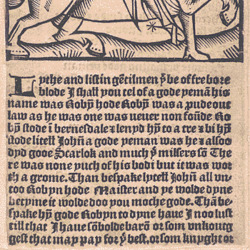
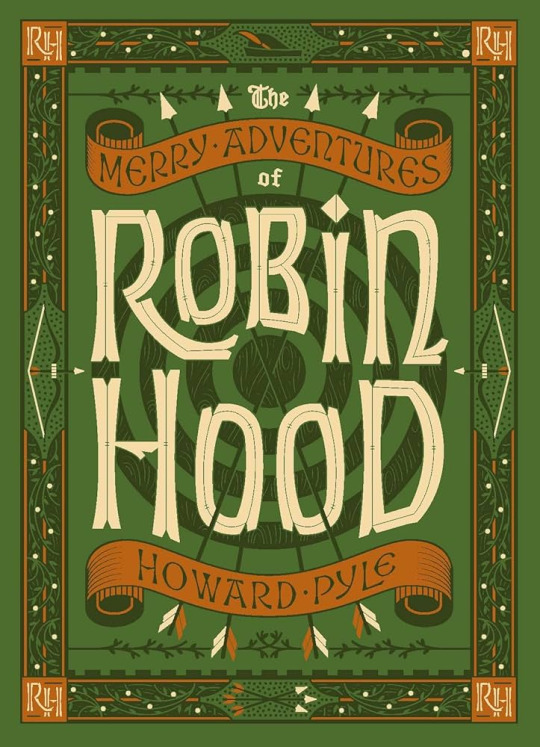
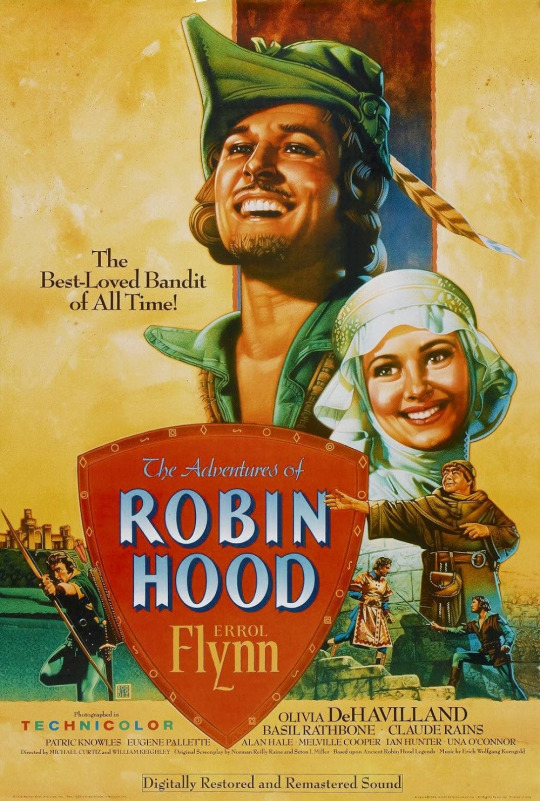
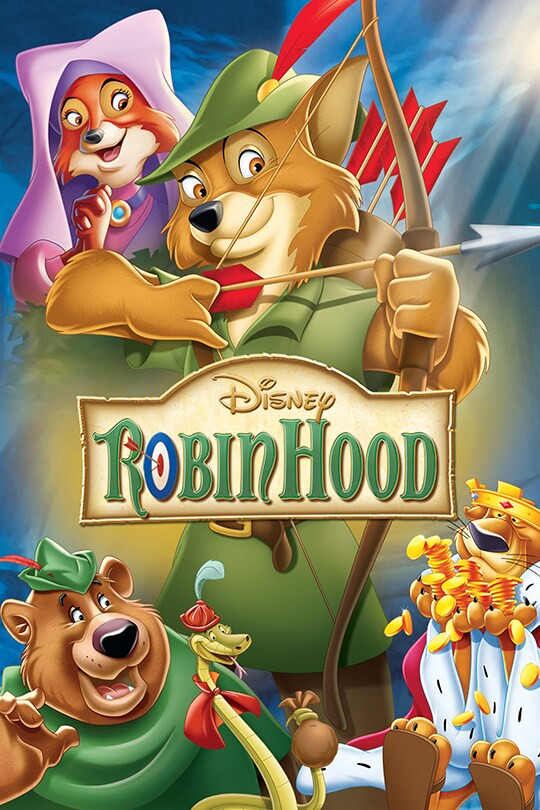
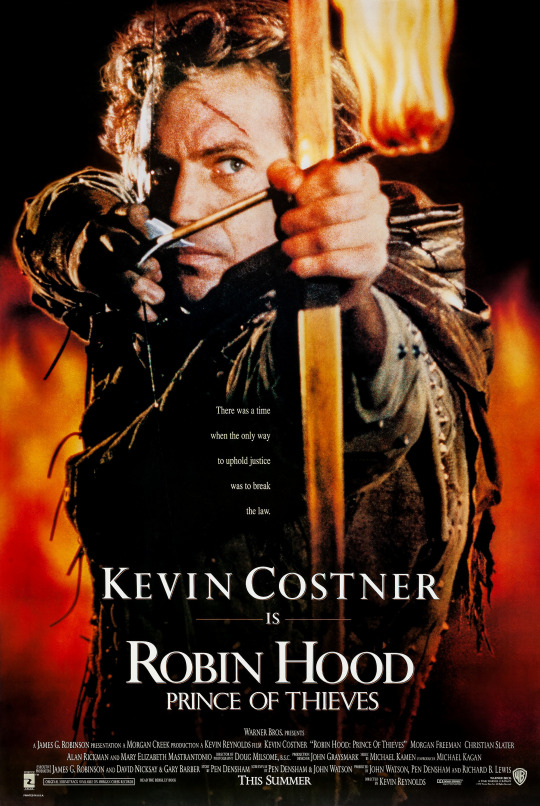


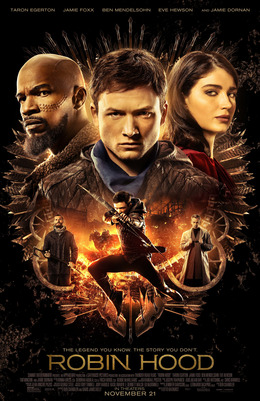
#a truly iconic trainwreck of a series#the legendary adventures of robin hood#Robin Hood#Matthew Porretta#Christopher Lee
105 notes
·
View notes
Text
Fun fact: Scottish Targes were beautifully crafted and decorated, made to last in battle and be passed down through the family. Viking Shields were incredibly strong and usually made from linden wood, but were not made to last. In battle, vikings would bring a few with them and they be going through those things like fucking coffee filters.
#hema#historical european martial arts#vikings#viking shields#shields#targe#scottish targe#scottish#scotland#scandinavia#history#fun facts#history facts#battle#highlanders#highlander#weapons#historical weapons
71 notes
·
View notes
Text
Esquire Singapore Dec 2019 - Joel Kinnaman Interview
OBSERVERVABLE ACTS

Editor-in-Chief: Norman Tan Photography: Michael Schwartz Stylist: Chloe Hartstein Groomer: Kristan Serafino Story: Wayne Cheong
Instead of a rooftop shoot that we had planned, we’re indoors at Dune Studios on Water Street. Outside, the weather is every writer’s dream: “It is an ash-streaked sky that portents a downpour.” “Like a warning, steel wool hangs overhead.” “A dishevelled blanket of grey that drifts languidly like detritus in a muddied pond.” A wet weather doth not a good shoot make.
When Joel Kinnaman arrives, the first thing you notice is how large he is. Bigger than life, broad-chested, he sometimes stands astride, like he’s about to break the spirit of a wild stallion. Then, there’s that presence; a sort of aura that’s quiet but still strong-arms you for your attention.
Just as the fashion shoot is about to start, Kinnaman asks if he could put on his own playlist for the shoot. He brings up his Spotify playlist, titled ‘For some of mankind’. ‘What Becomes of the Brokenhearted’ by Jimmy Ruffin plays.
“The playlists are just for fun,” Kinnaman tells me. “I’ve made a playlist for every project that I’ve been in.”
The project that this particular playlist was made for is For All Mankind, now playing on Apple TV+. It’s a show that puts forth the idea: what if America lost the space race to Russia?
Created and written by Ronald D Moore, the visionary behind the reimagined Battlestar Galactica and Outlander, For All Mankind stars Kinnaman as Edward Baldwin, a NASA astronaut who works alongside Buzz Aldrin (Chris Agos) and Neil Armstrong (Jeff Branson). Kinnaman’s character isn’t based on a particular historical figure, instead he is a composite or a representative of the ‘all-American’ astronauts of that era.

“I’m half-American and half-Swedish,” Kinnaman says. “I’ve lived in Sweden and America so, in a way, I’ve a split identity. My favourite part of the American spirit is not giving up. If they get knocked down, it is a national honour in getting back up and continuing the fight. In reality, when the US got to the moon, it concluded the space race. We didn’t get the continuation in space exploration that everyone was promised.”
Kinnaman is drawn to the science-fiction genre, fantasising of what could have been (though it can be said that the broad field of fiction can also put forward, ‘ what if’). Growing up, he watched the Star Wars movies, he loved the cyberpunk feel when he shot Altered Carbon. He is a fan of Blade Runner due to its dystopian future.
Do you think that sci-fi’s dystopian trope is becoming a reality? Kinnaman muses on that. “We’ve a president who is a national and international embarrassment. He’s immoral, a compulsive liar, a narcissist who doesn’t respect or appreciate democracy. I pray and hope that this nightmare would soon come to an end.
“But I believe we have the potential to overcome this. If we change paths and realign our focus in coming together as a human family, we can solve whatever problems that come our way together.”
This sentiment is echoed in For All Mankind, although the loss wasn’t the be-all and end-all for America. According to Moore, in losing the space race, America ends up the winner in the long run because of the continual effort into space exploration.
“Art can be a little lazy in pointing out the negatives. In many instances, the role that art and the artist play is showing us what’s wrong: that’s important but showcasing the positives is equally important. For All Mankind shows us how we should be operating if we are guided by our better angels.”
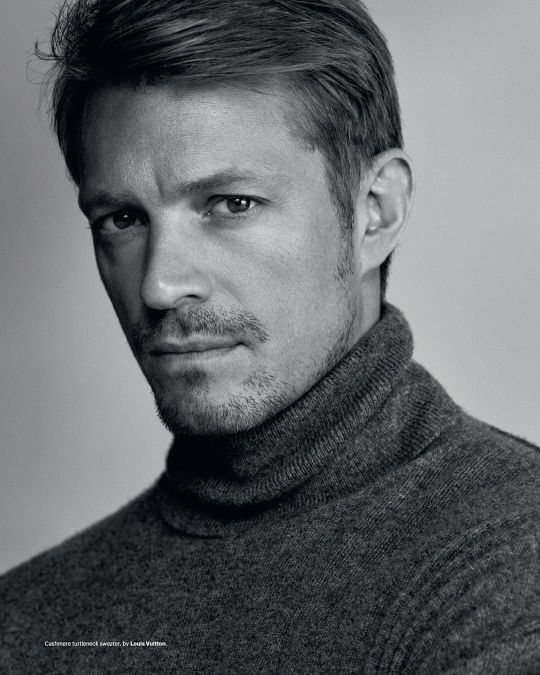
Physicist and theoretical biologist, Erwin Schrödinger, came up with a thought experiment. Imagine, if you will, a cat that’s sealed in a box. And inside that box is a device that might or might not kill the cat. Quantum theory states that quantum particles can exist in a superposition of states at the same time. Some even theorise that the quantum particles will collapse to a single state when it’s observed. When applied to Schrödinger’s cat, the feline is both dead and alive until you open the box.
Schrödinger came up with this thought experiment to explain that “misinterpreted simplification of quantum theory can lead to absurd results which don’t match real world quantum physics”. In the real world, it’s absurd that the cat is both dead and alive at the same time.
But one can also see this as an example of how the scientific theory works. Nobody really knows if a theory is right or wrong until it can be tested and proved. It’s like asking someone out on a date, you don’t know if that cute girl or guy will go out with you until you ask; the possibilities of rejection and acceptance remain in co-existence.
That is before you open the box.
Observe: Joel Kinnaman wouldn’t have existed if his father, Steve, had not defected from the US Army. An Indianapolis native, the elder Kinnaman was drafted and stationed in Bangkok, Thailand during the Vietnam War. While he was there, he started spending time with European backpackers, who have a different perspective of the war. A seed was planted. It finally blossomed when he attended a friend’s wedding in Laos. “It turned out that the woman’s family was half Laotian and half Vietnamese,” Kinnaman says. “It was an emotional moment for my dad. He asked himself if these were the people that he was going to kill.”
Still reeling from the love he had witnessed, the elder Kinnaman returned to his base. It was then that he was given the news that he was being reassigned to the battlefront in Vietnam.
In the history of war, the common punishment for desertion is death. According to the US Uniform Code of Military Justice, Article 85, it is meted out “by death of other such punishment as a court-martial may direct”. (Since the Civil War, only one American serviceman was executed for desertion: Private Eddie Slovik in 1945.)
Knowing the penalties for desertion, the elder Kinnaman made the decision that night to leave camp. He hitchhiked his way up into northern Thailand and into Laos. He burned his passport, changed his name and passed off as Canadian. For the next four years, he lived life among the Laotians doing odd jobs. Then, he found out that Sweden grants asylum to Vietnam deserters. Since moving to Sweden, President Jimmy Carter eventually issued an amnesty in 1977. The elder Kinnaman continues to reside in Sweden. After his first marriage ended, he was involved with Bitte, a therapist. This relationship yielded Joel.
“I’ve been working on the script about his life,” Kinnaman says. “The idea would be that I’d play my dad but I’m getting a little old.” It’s a story to be told, one about the dangers of blind patriotism; a tool that’s often exploited by governments. “We need to be critical individuals who should make up our own minds.”

Observe:��Kinnaman had his first taste of acting when he was 10. He played Felix Lundström on Storstad, a soap opera that looks at the lives of the residents living in the fictional town of Malmtorget. Back then, Sweden had only two TV channels so even if it’s a secondary or even tertiary role on an ensemble piece, people will recognise you. “I didn’t understand it,” Kinnaman says. “There was something thrilling about being famous but there was something I didn’t like about it either.” His whole experience as a child actor was underwhelming.
In fact, taking a page from ‘history repeating itself ’, observe as Kinnaman could have been a soldier in the Swedish army.
“It was mandatory for the men to be conscripted for a year in the army and it was during my time when the rules for enlistment started to relax,” Kinnaman says. “If you didn’t want to enlist, all you have to do is purposely fail the proficiency tests.”
Alas, Kinnaman was so caught up in the competition that he aced it. His results showed potential to be a company leader. He was enlisted and assigned to an 18-month tour in the Arctic Circle but Kinnaman plum forgot about it. When he moved to Oslo, Norway, to be a bartender, he received a call from his mother, informing him that there was a government notice stating that he was supposed to enlist in three days.
He called the army to tell them that he was no longer in the country. “They said, this is a serious offence and I could get prison time for this. But if I were to write a letter to explain the situation, I could get out of this.” And then he forgot to write the letter. Kinnaman continued working odd jobs but he was always haunted by the thought that if he were ever to be arrested by the police for anything, they might discover his draft dodge from his records and he would be sent to prison.
“I ended up at this fight outside a night club and got taken in by the police.” Kinnaman says. Observe: Kinnaman could have ended up serving his sentence for draft dodging but nothing came of it.
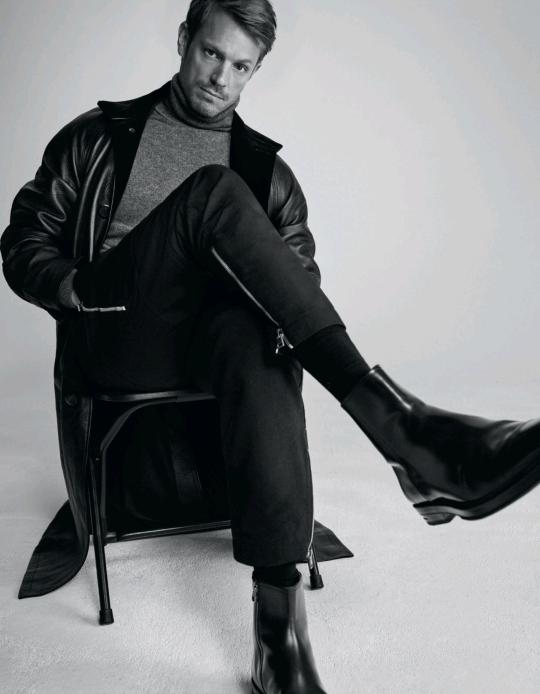
Acting was calling out to him once more. His friend, Gustaf Skarsgård (famously known for his role as Floki in History Channel’s Vikings), was on track to becoming an actor and advised Kinnaman to apply for theatre school. After several applications, Kinnaman finally got into what he describes as “Sweden’s second-best acting school” and would go on to film two movies during his enrolment.
After graduation, he continued acting in Sweden before moving to America. He kept himself busy. He made an appearance in The Girl with the Dragon Tattoo; starred as Governor Will Conway in House of Cards; made people notice with his portrayal as the homicide detective, Stephen Holder; scored the lead role in the Robocop remake; was cast as Rick Flag in Suicide Squad.
The one genre that Kinnaman can’t seem to appear in is comedy. Yes, he has a stern demeanour but the man is also funny. “Sometimes, Hollywood sees you in a certain way and it’s much easier to get cast for it. And the next is similar to that and so on. I haven’t made an effort to dissuade people’s opinion. The lighter side is probably more me.”
The closest he has gotten to doing comedy is the shooting of the Suicide Squad sequel. Helmed by James Gunn, Kinnaman said in another interview that it feels like he’s “shooting his first comedy”.
“I’ve been around tough people with issues before,” Kinnaman continues. “I’ve had some bad times so those kind of environments were natural to be in. It’s a survival mechanism too. A way for me to cope as I grew up. At the time, you’re figuring out about your identity. I felt insecure, powerless and didn’t know what to do in life.
“It was a period of my life that was pretty negative. But one of the beauties of acting is that those dark periods become a mother lode that you can mine from. Maybe I’ve drawn a little bit too much from it by playing too many tough guys.”
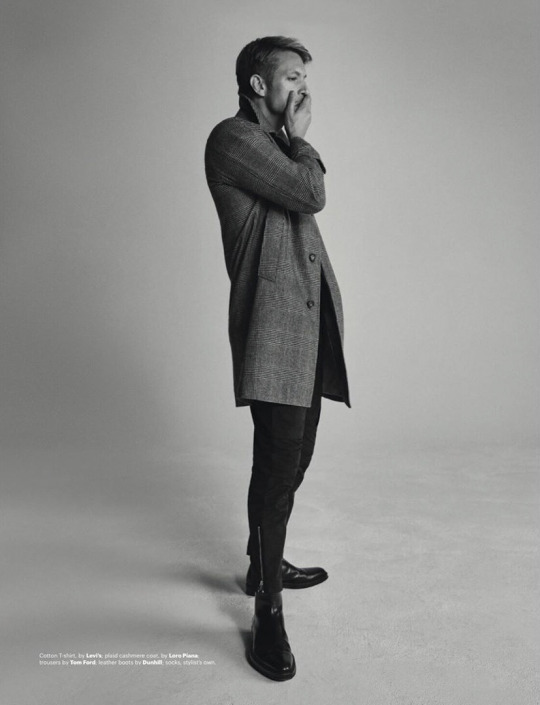
In May 2016, Kinnaman was one of the delegates and personalities from Denmark, Norway, Iceland, Finland and Sweden who was invited to one of President Obama’s final state dinners. Kinnaman, dressed in a sharp tuxedo, attended the dinner with his then-wife, Cleo Wattenström.
He overheard that the Obamas were fans of House of Cards and was looking forward to being introduced to them. At the reception, he and the other representatives stood in a row as President Obama made his way down the line, shaking hands and posing for a photo op. By Kinnaman’s admission, his mind wandered as he imagined what he’d say when President Obama came up to him. “Maybe I’d say, ‘Mr President’, and then he’ll say ‘Governor Conway’, and then we’ll laugh. And we’ll end it with a cool handshake.”
And all of a sudden, the president stood before him and Kinnaman muttered, “Mr President…” There was an awkward pause. Kinnaman would recount that it’s very possible that either the Obamas hadn’t watched the episode that he was in or if they did, his presence made zero impact. Before the silence could prolong, Kinnaman ended with, “thanks… for everything”. President Obama said something along the lines of, “Surely but surely, we cannot lose hope” and Kinnaman was ushered off.
He would retell this story when he introduced President Obama at Brilliant Minds, a conference of creative individuals who embody the forward-thinking spirit of Sweden, in June 2019. After the introduction, he returned backstage, where President Obama was waiting for his cue to go up. “He had this huge smile on his face and he said to me, ‘bring it in for a cool handshake.’ We hugged, we talked for about five minutes. He was super friendly. I’ll always remember that moment.”
Kinnaman isn’t shy about his politics. He voiced support for the #metoo movement; he had championed the environmental cause by one of his fellow Swedes, Greta Thunberg; he does not hide his disdain for the Trump administration.
“I think the last UN report stated that we have about eight years to turn back our carbon expenditure into the atmosphere,” Kinnaman says about where we’re heading as a species. “You don’t have to be a prophet to see that the world is heading towards the wrong direction. The oceans are heating up, the glaciers are melting. These natural disasters will be more frequent and that’s gonna lead to more tensions among countries.
“Politically, we’re moving towards a more nativist direction; people are pulling away from international cooperation. There’s the rise in disinformation campaigns, which will threaten democracy.”
But Kinnaman, ever the optimist, still believes in the human spirit, that we can innovate our way out of this quagmire.

Observe: Kinnaman, who was born with pectus excavatum, chose to correct the disorder instead of living with it.
Pectus excavatum is a chest-wall deformity that affects roughly one in 400. Instead of the breastbone being flush against the chest, it sinks in. Measured on a scale called the Haller index, anything above an index of 3.2 is considered severe. Kinnaman’s index was a seven or an eight.
“It’s something that’s survivable,” Kinnaman explains. “But it’s a condition that grows worse over time: your posture becomes worse; your stamina worsens as your heart is not given room to pump. By correcting it you can add years to your life.”
For a condition this severe, doctors had to insert two curved metal bars across his chest. Then the bars are turned to force the chest out and then the bars are wired to his ribs. The operation changed his life for the better. He doesn’t feel self-conscious whenever he removes his top. Six weeks after his surgery, he had to do reshoots for Suicide Squad. It was a fight sequence but Kinnaman sucked it up. “Would you like to feel it?” He asked.
He raised his arm like an invitation. I reached out and felt the spot, where the metal bars are, beneath the fabric and skin.
That’s an interesting party trick, I say. Kinnaman could only chuckle in response.
“It’s funny, if you ask me to say a line from a movie that I’ve been in before, I can’t. Not one line from any movie that I’ve done but I once did a monologue that was one hour and 30 minutes and I knew it by heart after 10 days.”

Kinnaman used to opine that as a Swedish American, growing up with dual cultures gives him a better perspective of the world but that also left him feeling like he doesn’t belong. He jumps from place to place, leading a nomadic existence.
“But I think,” he says as though he had stumbled upon some great truth a long time back, “I don’t wanna travel so much any more. Home. That’s where I’d like to be. I have two bases: one in Venice, LA and the other, an hour outside Stockholm.
“Growing up, my family didn’t have any money. We lived in this tiny little cottage that was in the middle of the woods. Now, I have this piece of land, where my family lives. This past midsummer was the first midsummer that we all spent together.
“That’s my new happy place.”
Joel Kinnaman looks like a man who has placed the final piece in that mystery of his life. He has stopped worrying about how he’s perceived by the public. He has exorcised people who have “struggled with jealousy, who don’t have a natural inclination towards generosity”. He has zero tolerance against bullshit. He likes how his career is shaping up—aside from Suicide Squad 2, For All Mankind is now filming a second season, and Kinnaman has three films coming out: The Informer; The Sound of Philadelphia and The Secrets We Keep; the last two, he avers, are his best work. “People who have watched me for a long time, it will remind them of my early career and for people who recently followed me, they will see a new side of me.
“I have goals that I’d like to achieve. Actor awards are such bullshit… until you get one. But yeah, that would be great. In future, I’d definitely want to be in a producing role and at some point, I’d like to also direct.
“I’ve said that I’d direct in five years time for about 10 years now.” That might change. His life is still a long and open road ahead.
Schrodinger’s cat posits two states that the creature can be in—dead or alive. But what if there’s a third option. That within the confines of the box, the cat is not there. It’s escaped. Unburdened from the stipulations of a thought experiment, free to do what it wants.

#photoshoot#magazine#joel kinnaman#esquire singapore#interview#we feed on scraps of new info#ive linked his Spotify playlist for people who missed it in march
186 notes
·
View notes
Text
Vikings Season 6: How Lagertha’s Legacy Lives On
https://ift.tt/3n3LEgt
This article contains Vikings season 6 spoilers.
With the release of season 6 part two on Dec. 30, Vikings has come to an end. While the spinoff Vikings: Vahalla is set to premiere on Netflix sometime in 2021, it will pick up the story of the Viking and Anglo-Saxon conflict 100 years after the last events depicted in the original series. Thus the series finale of Vikings means we are saying goodbye to all the characters whose exploits viewers have enjoyed these last seven years. Whether in the flesh or in flashbacks, this is the final farewell. And no character will be missed so much as Lagertha.
When Vikings began, in the spring of 2013, it was a largely misunderstood enterprise (and still continues to be, by some). Premiering as it did on the History Channel, a cable channel best known for its WWII/Hitlerian focus in the 90’s and more current shows like Pawn Stars and Swamp People, many assumed that Vikings was a testosterone-heavy fight-fest created to feed the key male 18-49 year-old demographic that the network targets.
But that was never really the intention of creator/writer/showrunner Michael Hirst. As Hirst tells Den of Geek, women, particularly Viking queen Lagertha (Katheryn Winnick), were always supposed to be central in the series’ storytelling.
“I was hoping she would be popular,” Hirst says. “History Channel is a male-viewed channel. And I think History Channel initially picked the show up because they thought it would appeal to that natural base. That they thought, ‘Well, you know, it’s obviously going to be a show full of battles and fights and so on.’ But I always thought it was going to be about Lagertha as much as Ragnar. And I like writing with women.”
Hirst’s focus paid off. Women, like myself, eventually found (generally through word of mouth) the series, and we loved what we saw. Lagertha and the rest of the women on the show were more than pretty faces and eternal victims. They ran the gamut from the initially innocent and oppressed Anglo-Saxon Judith (Jennie Jacques) to soft-power-wielding Gisla (Morgane Polanski) and Aslaug (Alyssa Sunderland) to shield-maidens like Torvi (Georgia Hirst) and Gunnhild (Ragga Ragnars).
But it wasn’t simply the variety of types of women on the show. It was that none of them were ever simple and they were never just plot devices. Whatever label their cultures applied to them, they have always exceeded them. The women of Vikings have been spouses, parents, politicians, strategists, lovers, and friends—everything that their male counterparts were, and often more successful in their endeavors than those men. It was surprising, and on a show like Vikings, something rarely seen on American television.
And Lagertha—farmer, visionary, wife of Ragnar, mother of Bjorn Ironside and Gyda, shield-maiden, Jarl and Kattegat’s queen in her own right— was the first among the women we tuned in to watch. Which pleased her creator.
“What was wonderful for me was that the show, on History Channel, was getting 50/50 male/female viewership,” Hirst says. “In other words, particularly Lagertha was making women watch the show. And it was about so much more than fights and battles and things. So I was really proud of that. And I think that Katheryn was just brilliant in the role.”
And she has been. Appearing in over 80 episodes (and directing season 6A’s “Valhalla Can Wait”), Winnick shows up more than any other actor, and helped the show bridge the gap when Hirst’s other primary antagonist, Ragnar, was killed off. Doomsayers predicted the end of the series after the departure of Travis Fimmel’s excellent Viking legend. But Winnick and Lagertha went a long way in ensuring we continued to stay engaged and tuning in.
Not that everyone was pleased. From the start, there has always been some Internet criticism of Lagertha that accuses the character of “forced feminism,” ahistorically expansive sexuality, and the impossibility of the existence of actual “shield-maidens.” Some have even argued that women do not possess the physical strength to wield historically accurate Viking weapons (despite watching female actors, Winnick and Georgia Hirst specifically, regularly do just that on Vikings on a regular basis).
In fact, Lagertha appears to be closer to the truth than even many historians assumed when the show began seven years ago. According to the series’ historical consultant and writer Justin Pollard, not only was “Viking society, for all of its apparent terrors to Christians, a much more egalitarian society than Christian society, and women had a much stronger role in it,” but despite “quite a lot of howls of complaint, since then, we’ve found a number of excavated bodies, often excavated in the 19th century, that have been reanalyzed and now been shown to be women.”
The most famous of these is the grave of what many historians had referred to, up until 2017, as the archetypical “ultimate Viking” of the tenth century, found on the island of Birka, Sweden. First discovered and documented in 1878, it was assumed to be the skeletal remains and grave items of a male warrior—sword, spear, axe, arrows, shields, etc. One year after Vikings premiered, an analysis of the pelvic bones and jaw by bioarchaelogist Anna Kjellström strongly suggested that the skeleton was that of a woman. In 2017, analysis of the DNA and Strontium isotypes on the skeleton by a team led by Charlotte Hedenstierna-Jonson confirmed that the body was a woman, and consistent with the geographic profile of someone having lived in the correct place to be a Viking.
Lagertha, and women like her, weren’t a modern-day invention—Hirst’s women warriors were a strangely prophetic echo from the past.
Read more
TV
Vikings Ending Explained
By Jamie Andrew
Nor are women incapable of the type of fighting we get to watch on the show. I brought up the point when I interviewed Clive Standen (Rollo) a few years ago, asking whether it was odd having Winnick, who stands as much as a foot shorter and weighs half as much than many of her male co-stars, on the battlefield. He laughed outright, assuring me that the actress, who holds black belts in two martial arts and founded three martial arts schools before the age of 22, is more than a match for those her character faces on the killing fields of Vikings–a not inconsiderable recommendation considering Standen’s own martial arts background. In other words, what we saw on the series was just as, if not more, real than the reality shows that make up a great deal of History Channel’s programming.
But whatever problems that naysayers may have had with the depiction of shield-maidens in general and of Lagertha in particular, her fans are legion and loyal. Word of her impending death began to circle as early as 2017. Article after article conjectured that she was always about to be killed off—even well past the point where most of Aslaug’s sons had given up their mission to avenge their mother.
So we had long been emotionally prepared for the death of the semi-retired Lagertha. That the means of her death was less glorious than the eventual end of her son Bjorn might have rankled had it not been so very much like the woman we have come to love. Both die in defense of their beloved Kattegat, but for Lagertha, the moment is about the heart of the show: family.
Vikings has always been less a historically-based action series and more a family drama told on an epic scale. And as it is as true now as then that rivalries and alliances, anger and empathy, misunderstanding and enlightenment, are constantly in flux in families. Lagertha has always had reason enough to hate her murderer. His birth alone might have earned him death at her hands. But like her equally illustrious partner Ragnar, she has never been as simple as the blood vengeance we traditionally and often erroneously associate with the Vikings.
Both are complicated characters, and capable of seeing the bigger picture when it comes to their family, to honor, to their fates. She recognizes that his actions are enough to rip apart the wounds only half healed among Ragnar’s sons. That she is able to comfort her own killer, to reassure him that he has done no more than live his destiny and hers, speaks to complexity and compassion all but absent in depictions of Vikings before the show began its run on History Channel.
And in that, Lagertha is precisely the embodiment of Hirst’s wish for the series:
“One of the things I most wanted to do was to overturn all the cliches about Vikings. I was told by some people at the beginning that I couldn’t really make a show about Vikings. Or, at least, I couldn’t make a show where Vikings were the heroes. Because they were always the Other. They’re the bad guys. They’re the people who come in the night and steal and rape and burn. And how could I make them heroic in any way? And of course, people thought they knew about the Vikings. Actually, they didn’t know anything, which is often the case. And so I thought, “Well, how do I show that?”
It turns out, you do it by creating a character like Lagertha. You do it by taking one of the most misunderstood members of a misunderstood culture and turn her into a hero who makes mistakes and silent sacrifices, enjoys triumphs and endures losses, bides her time and acts impulsively, regrets and doesn’t compromise, gives and takes, and loves and hates, and still goes on, even in death.
You make her one of us.
cnx.cmd.push(function() { cnx({ playerId: "106e33c0-3911-473c-b599-b1426db57530", }).render("0270c398a82f44f49c23c16122516796"); });
And that’s why we have loved her, cheered her on, cried over her pain, and now mourn her end. Because Michael Hirst and Katheryn Winnick made Lagertha someone we could recognize some modicum of ourselves in, creating a link between Vikings of the 9th century and our own 21st century lives. She reminds us that carrying a sword in battle isn’t what makes a hero. Heroes are so much more than that, and while we will never wield axe or spear, the heroic is always within our own grasp.
The post Vikings Season 6: How Lagertha’s Legacy Lives On appeared first on Den of Geek.
from Den of Geek https://ift.tt/387HG2f
2 notes
·
View notes
Photo
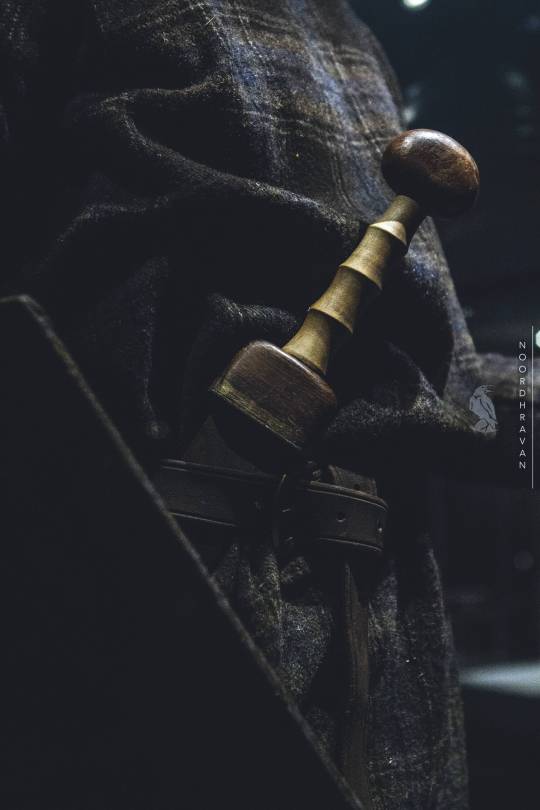
c h e r u s c i
northern germanic sword, photographed in the Huis van Hilde museum in the netherlands instagram.com/woedans
#germanic#proto european#proto germanic#germania#slavic#roman#history#sword#Historical European martial arts#fencing#viking#pagan#paganism#heathen#vikings
3K notes
·
View notes
Text
Running (SF/F)or the Culture, has been a dream come true for me, and I truly appreciate Queen Wahida for putting me in this space. Signing with a Black owned publishing house in and of itself was a big deal for me, it's such a rare and beautiful thing to be a part of. When I was asked to come on board and carry the banner ad Publisher/Editor for the sci-fi/fantasy imprint it was kinda like being invited to drive the Batmobile. Now it's my hope to be as universally cool, unapologetically Black, and a space for everyone willing to take the ride. To have started as an indie author, with a book and a dream, and to now find myself in this position ready to shake the literary world. Its almost like I'm living the trope in there coolest way. I feel like the proverbial farm boy meeting extraordinary circumstances in order to fulfil great destiny, and it's humbling.
I'm honored and elated that my series The Vanguard has been chosen to lead the way for the imprint, and I think it's a good banner for what we are trying to do. Just like The Vanguard, we see a blending of vibes, worlds and literary traditions to create sci-fi and fantasy that will scintillate and inspire. It's my goal that we amplify sci-fi and fantasy that fuel imaginations and inspire.
In Book I The Stand meets The Fires of Vengeance as diverse heroes battle the police state in a post collapse New England inner-city!
The Road to Resistance by Chase Bolling is probably one of the most BADASS books I’ve ever read.
-@courteneys_corner, Bookstagram
Okay. Even though dystopians/sci-fi/fantasies aren’t my top genre, let’s just say this book gave me LIFE in many ways.
-@BooksByJanee, Bookstagram
After weapons technology is mysteriously knocked back to the dark ages, America is plunged into chaos! Shades of the Black Wall Street Massacre, and the Trump Riots ensue when the president consigns everyone but the elite to mass incarceration, and forced labor! As martial law strikes a night of protests leads to riots, looting and revolution!
Chessed, an S.C.A loving ex-gang member, dons his armor, hefts his weapons, and declares war on corrupt cops, hate groups, and the nefarious powers of a hostile government! He and his allies must fight to survive if they are going to carve a post-apocalyptic Camelot from their embattled inner-city community!
Afrofuturism, epic fantasy, and dystopian science fiction combine for an unforgettable sword and soul thriller! Beautifully crafted world building brings us romance, conspiracy, and magic...blended with heart pounding action, as modern day knights of the round table arise from the crucible of poverty, police brutality, and street violence!
Inspired by books like The Red Knight and A Game of Thrones, The Road of Resistance Part 1 is a surefire hit for fans of Octavia Butler, Mark Lawrence, Milton Davis, and Brandon Sanderson! Read the novel hailed as 'Stirring, gritty, connected and epic. A great read!' by Christian Cameron today!
In Book II Power and Vikings meet The Hunger Games as the revolution continues with The Road of Resistance Part 2!
This book will have you turning pages all night. The fight scenes alone are so well choreographed they are breath-taking. I can see every sweep of the swords and axes and found myself wincing and jumping at the descriptions which evoked such vivid imagery.
The Road of Resistance is Black Lives Matter meets Vikings, but the Vikings are brothas, this time. And they are taking no prisoners.
-Audra, Between The Reads Podcast/Author of Blood Land
When Chessed set out to execute his SHTF plan with his homies, he never imagined that he would be walking the road to kingship. But with modern weapons extinct, and years of S.C.A. and historical African martial arts under their belt, he and his company of unlikely heroes find themselves at the helm of a fledgling nation called the Vanguard!
But as ultra-nationalists hate groups rise, building economies on human trafficking, and the governor wielding incredible new emergency powers sets his eyes on rebel cities; ridin' for the hood takes on an brand new meaning!
Chessed must unite survivors, refugees, and former street gangs into an army to stop this new onslaught of tyranny! Join the Vanguard and hold the line with a diverse cast of characters as the Vanguard marches to war!
Fans of Bernard Cornwell, Tochi Onyebuchi, Sarah J. Mass, and Marlon James, have a new favorite to add to their list! Bolling combines Afrofuturism with military science fiction and urban fantasy for a non-stop thrill ride!
In Book III some queens don't need a dragon to bring fire and blood!When weapons technologies were trapped in the dark ages, and a rogue American government turned on its own people, the Vanguard, a revolutionary, separatist kingdom, led by King Chessed of Bridgeport was born! But when Chessed is betrayed and presumed missing or dead, what will become of his fledgling kingdom?
In his absence, it's up to Khalise, first lady of the Vanguard, and mother of his children to take up her nation's banner, and don her crown! As she dispatches trusted bannermen to search for the king, she must overcome depression, loss, and anxiety to lead her people to victory! But a bloodthirsty occultist elite, and an onslaught of witches, wizards, psychics, and demonic forces make the task more dangerous than ever before in the afrofuturist, dark fantasy thriller The War We Make: The Vanguard 3!
As I work on The Vanguard V The Juneteenth Campaign I am excited to announce the Chronicle of the Unbroken is entering it's beta phase! Fresh off a jailbreak from a government black site in Sleepy Hollow, Chessed of the Vanguard is back in Chronicle of the Unbroken! While longing for a reunion with Khalise and his family, but first he must fight. Beside his fellow escapees Chessed must fight through a post-apocalyptic New York; ruled by a shadowy cabal of Federal High Constables, corrupt activist clergy, and a necromancy wielding special forces officer, in disguise as the leader of a terrifying street gang!
The secret origins of the rogue AI, AINI that stripped the world of modern weapons is revealed as Chessed must discover new allies if he has any hope of victory against insurmountable odds! Anybody interested in becoming a beta reader for my later project feel free to contact me on IG @Chase.Bolling.Author!
Just Battles, and Flawless Victories,
Chase of (SF/F)or the Culture
#fantasybooks#fantasy#fantasyfiction#blackfantasy#bookstagram#blackbookstagram#epicfantasy#afrofuturism#sciencefictionbooks#sffortheculture#blacksciencefiction#black authors#diverselit#diversebooks#letsreadownvoices#writingcommunity#black literature
1 note
·
View note
Note
Hi! I know you're also from Alberta and do historical things- what Ren faires/historical re-enactments do you suggest? I'm trying to find one to bring my boyfriend to :)
Hmm, let me think… I’ll leave out things like Fort Edmonton, Heritage Park, and Highland Games, since paid interpreters and skilled competitors are kind of in a different class. Although like, I’ll definitely shout out to the Ukrainian village by Vegreville, those folks are excellent. I also know I’m missing a crapton of post-1800 stuff, both fantasy/steampunk/”whee let’s dress up!” and local history groups, since that’s not my area of interest. And I’m not even getting into science fiction/fantasy/anime conventions or LARPs. Once you scratch the surface there is actually a lot going on.
Demos and Spectating
June 13-14 2020, The Military Museums in Calgary are holding a celebration of 2000 years of military history. Which honestly I’d love to go to myself if I could get down there, since mounted combat is still pretty rare in Alberta, and they promise to have two separate cavalry units!
June 14 & 15 - Vikings in the Streets Festival - Viking, AB holds a celebration of Scandinavian heritage, complete with re-enactors
August 1 & 2 - Days of Yore Festival - Didsbury, AB - A historical festival that draws everyone from American Civil War people to the Vikings to WWII re-enactors.
August 8-9, Brooks Medieval Faire - Brooks, AB - the closest Alberta has to a renaissance faire where you can show up wearing whatever and soak in the atmosphere
Knights of the Northern Realm - Every so often they’ll announce when they’ll be out at a demo for things, usually in Edmonton
Early Music Voices and Early Music Alberta run concert series in Edmonton and Calgary
Starting a Hobby
Society for Creative Anachronism - Probably the broadest selection of time periods and activities, from swordfights to music, feasts to archery, etc. They’ve got branches and events all over the province; you can wander in to a weekly fight practice in your street clothes, show up to a monthly tavern night and put on a loaner costume, or go to a bigger event for the full experience
Western Martial Arts - If you want to focus on the excellence of your swordsmanship without the gentler arts, there’s a growing movement to practice historical combat as a separate athletic event. There are groups in Edmonton, Edmonton and Rimbey, Calgary, and Calgary again.
Fancier Getups
April 17-20, SCA Known World Costume and Rapier Symposium - Edmonton, AB - Alberta’s moving up in the re-enacting world! Hosting an international symposium, by god! It’ll be a weekend of classes about combat and costuming, and there’ll be a masquerade ball, and OH I’m excited.
SCA Avacal Quad War, July 31-August 3, 2020. Actually a wee bit over the Saskatchewan border in Marsden SK. This is an entire weekend of camping on a site people have been building on for 25 years, and one of the best local events to let you really forget the modern world exists and feel like you’re walking through a medieval village. Costumes necessary but they help you out.
Pride and Prejudice Ball - Several centuries later and much more expensive (baseline $120 to get in the door and you have to be costumed), BUT, kind of like a… luxury all-included re-enactment experience? This is a professional group that runs for-profit events, with very nice venues and music and food. None upcoming in Alberta at present, but in the past they’ve done events in Edmonton and Calgary.
19 notes
·
View notes
Text
I bet that book’s pretty good
“People with brains went to New York and people with faces came West.” Though she is one of the city’s most fervent defenders, Eve Babitz captures a prevalent sort of sentiment about her native Los Angeles. As we see in films like Mullholland Drive and Under the Silver Lake, the cultural identity of Los Angeles has been largely dominated by Hollywood and the glamourous and sinister entertainment industry—superficial, fickle, and ruthless.
Even during the Golden Age of Hollywood, the city faced critiques from the storied, East Coast bastions of art and thought as being vapid and lacking in cultural merit. With such a reputation to overcome, how has Los Angeles, over the course of the last century, become one of the world’s major cities—with unparalleled cultural, economic, and technological reach?
In CITY AT THE EDGE OF FOREVER: Los Angeles Reimagined UCLA professor and critic Peter Lunenfeld reconstructs the portrait of the city through unlikely associations, forgotten histories, and strange connections. In this LA, rocket science connects the occult teachings of Aleister Crowley, Robert Heinlein’s Stranger in a Strange Land, and Scientology; rock ‘n roll legends like Jim Morrison, Crosby, Stills & Nash, and Frank Zappa are inextricably linked with the aerospace industry and the military industrial complex; and, perhaps Walt Disney and Hugh Hefner weren’t so different after all.
Lunenfeld illustrates Los Angeles’s importance as an influential hub of design and modernism through the comparison of two husband and wife teams—historians Will and Ariel Durant and designer-architects Charles and Ray Eames. Joan Didion and local LA celebrity Angelyne are connected by way of the iconic Corvette Stingray—a car designed by Larry Shinoda, a Japanese American who was interned along with his family during World War II. The city’s development into a thriving locale for gastronomy dovetails with the arrival and popularity of Bruce Lee and martial arts.
Each chapter of CITY AT THE EDGE OF FOREVER reveals a new and unusual dimension to the history and development of the city. It is a wholly original and engaging account of the unique spirit and bustling landscape of modern Los Angeles.
Peter Lunenfeld is vice chair of UCLA's Design Media Arts department, and a faculty member in the Urban and Digital Humanities programs. He has published award-winning essays and several books with the MIT Press about the ways in which art, design, and technology intertwine, including The Secret War Between Downloading and Uploading: Tales of the Computer as Culture Machine. His historical and theoretical writings have been translated into more than a dozen languages. He has lived in Southern California for the last three decades. “Immersive cultural history…Richly detailed and evocatively written this highly original account unearths L.A. stories ‘more complex [and] contradictory... than anything that ever made it to the screen.’
Readers will be spellbound.”—Publishers Weekly (Starred Review)
“A kaleidoscopic view of Los Angeles that looks beyond stereotypes… [Lunenfeld] makes a strong case for the city’s exceptionalism.”—Kirkus Reviews
“Here is a title to be added to the list of great meditations on Los Angeles. City at the Edge of Forever is a book about southern California but it is also a book about all of us, about how fringes become mainstream, how politics morphs into culture, and how culture mutates uncontrollably under the American sun.”—Thomas Frank, author of What’s the Matter with Kansas?
CITY AT THE EDGE OF FOREVER Los Angeles Reimagined By Peter Lunenfeld Viking | On Sale: August 11, 2020 | Hardcover | ISBN: 9780525561934 | Price: $28.00
1 note
·
View note
Text
Glima: the Viking Martial Arts
Glima is a Scandinavian martial arts system used by the fearless Vikings.
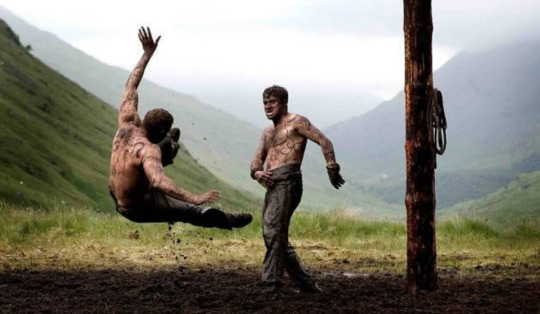
In order to survive or win a battle, Viking warriors were expected to master a fight with and without weapons. Strength wasn’t the only way to dominate your opponent even though the Vikings were famous for their strength and brute force. To advance their combat skills and dominate the battlefield causing a Viking age they developed a traditional and quite ancient martial art system which they implemented into their other fighting skills. This martial arts system called Glima was practiced by men and women of all ages.

Glima is mentioned in Old Norse texts. In the Prose Edda, in the book of Gylfaginning one can read how the Norse God Thor took his journey to Utgards-Loki and was defeated in a wrestling match by the female jötunn Elli (Old Norse “Elli” means “old age”).
It might seem odd that mighty God Thor was defeated by an old woman, but she was skilled in the martial art of Glima.
But Thor was also familiar with Glima. Glima was so important for Viking society that their most popular god, Thor, was also the god of wrestling.
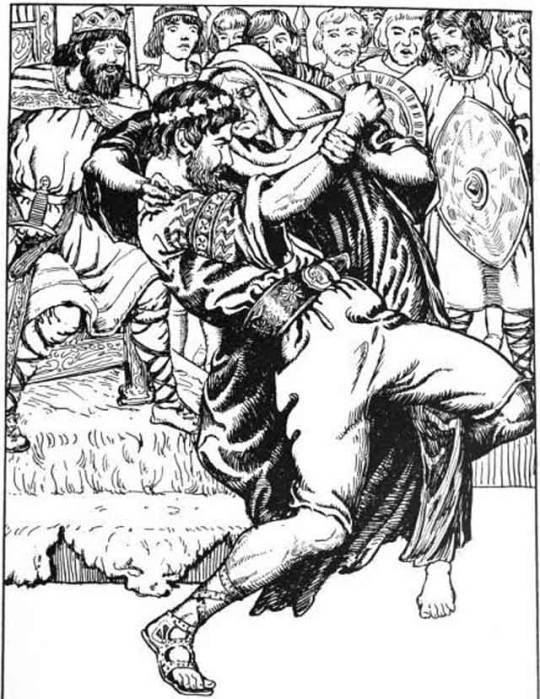
The word Glima in Old Norse means glimpse or flash. The name tells it all and that is to destroy your opponent in a glimpse of a second.
Due to lack of historical written records it’s difficult to determine when Glima became a popular ancient martial art.
What is known is that according to the Jónsbók law book from 1325 AD., original Norwegian settlers in Iceland brought Viking wrestling and the Glima combat systems with them to the island.
Glima is also mentioned in the Icelandic medieval book of laws known as Grágás (Gray Goose Laws), which refers to a collection of earlier Norwegian laws, there were rules for wrestling.

The Vikings were mostly farmers and animal breeders but they plundered when times got tough. They did this in order to survive. This technique was invented by the people and it spread variously when the Viking age struck. Women and men were implementing it in their raids and had an element of surprise to their opponents. This was a type of wrestling and it was considered a sport, they even implemented it in their gods.

Because Glima was used everywhere around the Viking culture it became a tradition. Children from the age of 6 -7 years old started training this technique and mastered it until they reached the age where they could fight. In some ways then Viking society was much more martial than one had realised before.
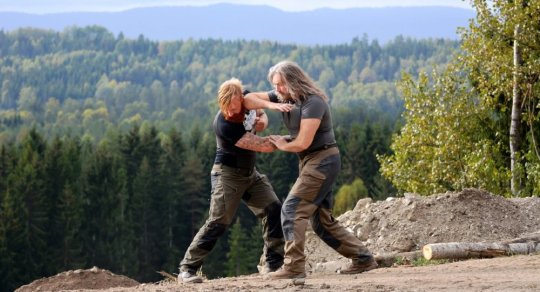
This ancient martial art system is divided into two categories known as Combat Glima and Sport Glima.
Combat Glima - Lausatok (Løse-tak) was used in mainly used by Viking warriors for self-defense and combat.
Combat Glima and the martial art style includes throws, blows, kicks, chokes, locks, pain techniques, and weapon techniques. Many expert consider combat Glima to be comparable with the best complete martial arts systems from around the world.

Sport Glima was in ancient times practiced by men, women and children. It was a popular and most widespread sport in the Viking Age.
Sport Glima consists of several Scandinavian wrestling styles such as Lausatok (free-grip glima), Hryggspenna (back-hold glima) and Brokartok (trouser-grip glima). Sport Glima has complex rules with competitors divided into several classes based on strength and skill.
The most popular style in Iceland and Sweden is Brokartök. It’s Iceland’s national sport.
Brokatok is the most widespread among the types of glima in Iceland. Brokatok is more focussed on strength. The two wrestlers wear a special belt around their waist, they also have belts on their thighs and on each leg.
Hyrgspenna or backhold wrestling is similar to other types of wrestling. Hyrgspenna is more of a test of strength. In this type of glima, the participants take hold of each other’s body, and whoever touches the ground with any part of the body except the feet, will lose.
Lausatok, which is also called loose-grip or free-grip, is quite aggressive compared to the other types of glima. All kinds of wrestling techniques are allowed.

Glima was a demonstration sport at the 1912 Stockholm Olympic Games.
The tradition of Glima has been kept alive and the sport is still very popular in Scandinavia.

99 notes
·
View notes
Text
Belarusians have long defended their lands from enemies from the east and west. And today, expositions in museums and ancient castles, as well as costumed reconstructions of battles help to get back to the times of powerful princes and brave warriors.
Among the famous medieval battles in which the ancestors of the Belarusians participated and which are now the basis of historical festivals:
Battle of Krutogorye (modern Dzerzhinsk, Minsk region) in 1249, when the troops of the Belarusian princes defeated the Tatar-Mongols;
the Battle of Grunwald (Poland) in 1410, where the soldiers of the Grand Duchy of Lithuania fought with the Teutonic knights;
the battle of Orsha in 1514 with the troops of the Moscow principality;
battles of the Livonian War (1558 - 1583) ...
In many cities of Belarus in the Middle Ages defensive donjon towers towered, but to this day only one has survived - Kamenetskaya, located on the outskirts of Belovezhskaya Pushcha. As one of the rare buildings of the XIII century, which survived after numerous enemy raids, it is included in the preliminary UNESCO World Heritage List.
This landmark list includes three Belarusian fortresses:
Church of St. John the Baptist in the village of Kamai,
Church of the Nativity of the Virgin in the village of Murovanka,
Church of St. Michael in the village Synkovichi.
And of course, the memory of military events of different times is kept by almost all Belarusian castles - the surviving and restored or turned into mysterious ruins:
Krevo Castle
Lida Castle
Novogrudsky castle
Lubchansky castle
Golshansky Castle
Mir Castle
Nesvizh Castle
Ruzhansky castle
Bykhov Castle
At various times of the year, medieval history festivals and jousting tournaments are held in the cities and near the walls of the ancient residences of Belarus. Among the most famous:
the festival of medieval culture "Golshansky castle" (May, Golshany, Oshmyany district);
International Festival of Slavic Martial Arts (May, Grodno);
festival of medieval culture "Rubon" (May, Polotsk);
International Historical Festival "Heritage of the Ages" (June, Mir Castle);
Knight's Fest in Mstislavl (July, Mstislavl);
International festival "Our Grunewald" (July, Dudutki);
festival "Krevo Castle" (August, Krevo, Smorgon district);
International Knight Festival "White Castle" (August, Ostroshitsky Gorodok, Minsk District);
knightly festival "Sword of Lida Castle" (September, Lida);
International festival of medieval culture "Novogrudsky castle" (September, Novogrudok);
The International Historical Festival "Minsk Internship" (September).
Traveling around Belarus, one can return to the ancient times of the Vikings, who, moving eastward along the path "from the Varangians to the Greeks," stopped and even ruled the Belarusian lands. Today, in the Lida district, an open-air museum called Ponemanskoe Gorodishche is being created, dedicated to the life of the Eastern Slavs, Balts and Scandinavian Vikings.
In 2014, Belarus hosted the first shipping festival of early medieval culture "From the Varangians to the Greeks". In the multi-day boat expedition with festival stops in several cities participated ships recreated according to historical drawings and documents.




24 notes
·
View notes
Text
Sword vs Sword disarm, Vinland Knife Fighting Guild style. (Check out vinlandknifefightingguild on Instagram!)
This disarm is really cool because the mechanics of it work on basically any weapon. If you follow my work, I plan on explaining this fully eventually, but you can easily use these same mechanics if you’re holding a knife, an axe, a sword or a stick. There’s no way to know for sure how exactly the vikings fought, but we’re doing our best to approximate it. Kind of like how Asatru is a modern version of the now mostly lost viking religion, the Vinland Knife Fighting Guild is attempting to revive the mostly lost viking martial art, with what we call Vinland Glíma.
#norse paganism#the asatru community#asatru#norse gods#norse mythology#pagan#swordsmanship#swordplay#swords#sword#sca#self defense#historical viking martial arts#viking martial art#historical european martial arts#martial arts#hema#vinlandknifefightingguild#grappling#wrestling#lausatok glima#glima
131 notes
·
View notes